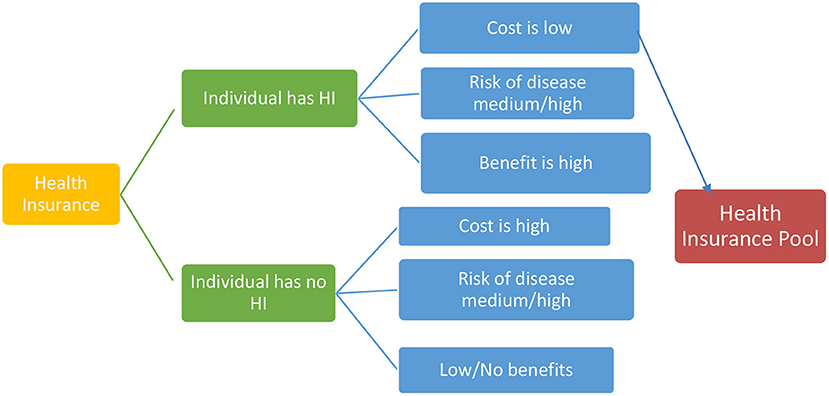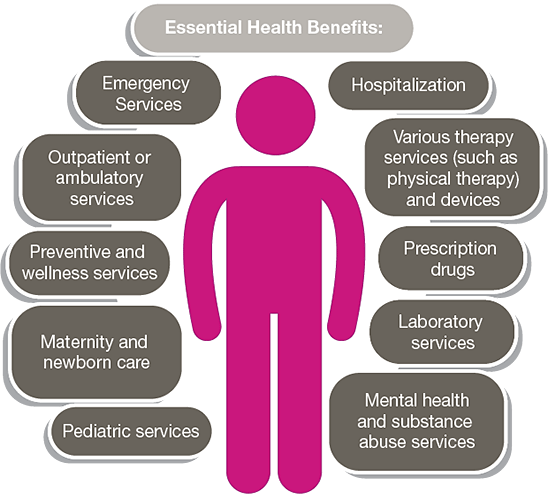Medicare Advantage Agent for Beginners
Wiki Article
What Does Medicare Advantage Agent Do?
Table of ContentsThe Buzz on Medicare Advantage AgentMedicare Advantage Agent for BeginnersGetting My Medicare Advantage Agent To Work

adheres to from perplexing the relatively young age account of the without insurance with the much better health and wellness, usually, of younger persons. This covers the web link in between health and wellness standing and medical insurance. For those without access to workplace health insurance coverage, poor health and wellness is a possible barrier to acquiring nongroup protection due to the fact that such protection might be highly priced, leave out pre-existing conditions, or be just inaccessible. The variety of without insurance Americans is not particularly large and has not altered in current years. 7 out of 10 respondents in an across the country representative study assumed that less Americans lacked medical insurance than in fact do(Fronstin, 1998). Approximately half(47 percent )thought that the number of individuals without health insurance policy lowered or continued to be consistent over the last fifty percent of the last years(Blendon et al., 1999). This drop of almost 2 million in the variety of people 'without insurance (a decrease
of around 4 percent)is definitely a positive change. With a softer economic climate in 2000 the most up to date reported gains in insurance policy protection may not proceed(Fronstin, 2001 ). The decline in the variety of uninsured will not proceed if the economic climate remains slow and wellness care expenses continue to outmatch inflation. This is since the information were accumulated for a duration of solid economic performance. Of the estimated 42 million individuals who were uninsured, almost about 420,000(regarding 1 percent)were under 65 years of age, the age at which most Americans come to be eligible for Medicare; 32 million were grownups between ages 18 and 65, around 19 percent of all grownups in this age team; and 10 million were kids under 18 years old, about 13.9 percent of all children (Mills, 2000). These quotes of the variety of individuals uninsured are produced from the yearly March Supplement to the Current Populace Study (CPS), carried out by the Census Bureau. Unless or else kept in mind, nationwide estimates of individuals without medical insurance and percentages of the population with different type of protection are based on the CPS, one of the most commonly made use of resource of estimates of insurance policy protection and uninsurance rates. These surveys and the price quotes they produce are defined briefly in Table B. 1 in Appendix B - Medicare Advantage Agent. These surveys differ in dimension and sampling methods, the questions that are inquired about insurance policy
The Medicare Advantage Agent Diaries
coverage, and the time duration over which insurance policy protection or uninsurance is measured(Lewis et al., 1998, Fronstin, 2000a ). Still, the CPS is especially valuable since it generates yearly estimates reasonably quickly, reporting the previous year's insurance policy protection approximates each September, and due to the fact that it is the basis for a constant set of quotes for greater than twenty years, permitting evaluation of fads in protection gradually.
Medicare Advantage Agent Can Be Fun For Anyone
Over a three-year duration beginning early in 1993, 72 million individuals, 29 percent of the united state population, were without insurance coverage for at least one month. Within a solitary year(1994), 53 million people experienced a minimum of a month without coverage(Bennefield, 1998a). 6 out of every 10 uninsured adults are themselves used. Although functioning does enhance the possibility that one and one's relative will certainly have insurance, it is not a warranty. Even participants of families with 2 permanent wage earners have almost a one-in-ten chance of being without insurance (9.1 percent without insurance rate)(Hoffman and Pohl, 2000 ). The relationship between wellness insurance coverage and access to care is well established, as documented later on in this chapter. The partnership in between health and wellness insurance coverage and health and wellness results is neither straight neither basic, a comprehensive clinical and health and wellness services study literary works links health and wellness insurance coverage to improved access to care, better qualityHigh quality and improved boosted and population populace status. The 2nd record, on individual wellness end results for without insurance grownups, is stood for by the inner circle of the number, while the third report, on family well-being, encompasses their explanation the topics of the 2nd report yet emphasizes a different system of evaluation, specifically, the family. The 6th record in the collection will certainly offer info concerning methods and initiatives carried out locally, statewide, or country wide to attend to the absence of insurance coverage and its negative influences. Levels of evaluation for analyzing the results of uninsurance. use this link This discussion of health insurance protection focuses largely on the U.S. populace under age 65 due to the fact that practically all Americans 65 and older have Medicare or other public protection.
Furthermore, it concentrates particularly on those without any health insurance coverage for any kind of size of time. The issues encountered by the underinsured remain in some respects comparable to those encountered by the without insurance, although they are usually less serious. Uninsurance and underinsurance, nevertheless, entail noticeably different policy concerns, and the approaches for resolving them may differ. Throughout this research study and the five records to comply with, the primary focus is on individuals with no medical insurance and thus no aid in paying for healthcare past what is offered with charity and safety and security web establishments. Medical insurance is a powerful element affecting invoice of care because both individuals and physicians respond to the out-of-pocket rate of solutions. Medical insurance, however, is neither essential neither sufficient to acquire accessibility to clinical solutions. The independent and straight impact of health and wellness insurance coverage protection access accessibility health services solutions well established. Others will acquire the healthcare they require also without medical insurance, by paying for it expense or seeking it from suppliers that use treatment free or at extremely subsidized rates. For still others, medical insurance alone does not ensure invoice of care due to various other nonfinancial barriers, such as a lack of wellness care companies in their area, minimal accessibility to transportation, illiteracy, or linguistic and cultural differences. Formal research about without insurance populations in the United States dates to the late 1920s and early 1930s when the Board on the Price of Healthcare produced a collection of records regarding financing doctor workplace check outs and hospital stays. This concern came to be salient as the numbers of medically indigent climbed up throughout the Great Anxiety. Empirical research studies constantly sustain the web link between access to care and improved health results(Bindman et al., 1995; Starfield, 1995 ). Having a useful source routine resource of care can be taken into consideration a forecaster of accessibility, instead than a direct step of it, when health outcomes are themselves utilized as gain access to indicators. This extension of the concept of gain access to dimension was made by the IOM Committee on Keeping Track Of Access to Personal Healthcare Solutions(Millman, 1993, p. Whether or not moms and dads are insured appears to influence whether their kids receive treatment as well as just how much careeven if the youngsters themselves have coverage(Hanson, 1998). The wellness of parents can impact their capability to take care of their children and the level of family members stress and anxiety. Fretting about their children's accessibility to care is itself a source of stress for moms and dads. Three chapters adhere to in this report. Phase 2 provides a review of just how employment-based wellness insurance, public programs and specific insurance plans run and engage to give substantial but insufficient protection of the united state population. This consists of an evaluation of historic trends and public plans impacting both public and personal insurance, a discussion of the communications amongst the various sorts of insurance policy, and an exam of why people relocate from one program to another or end up

Report this wiki page